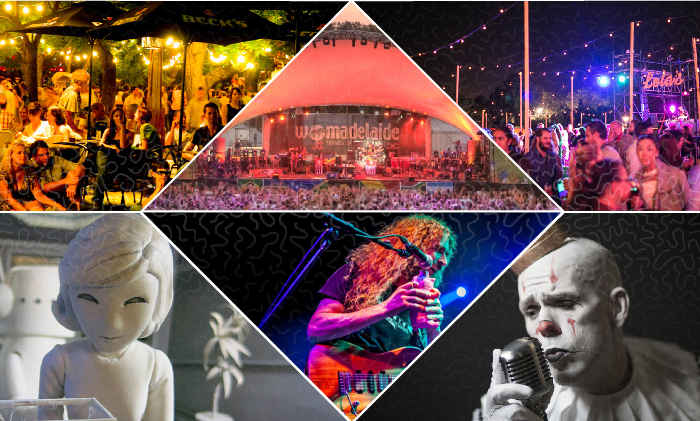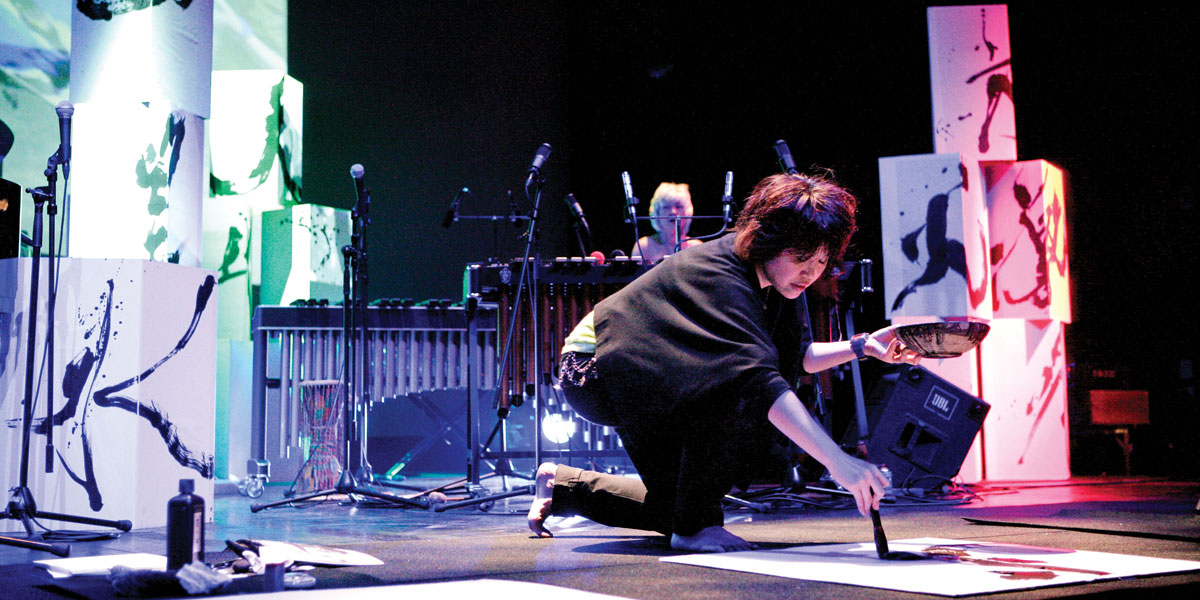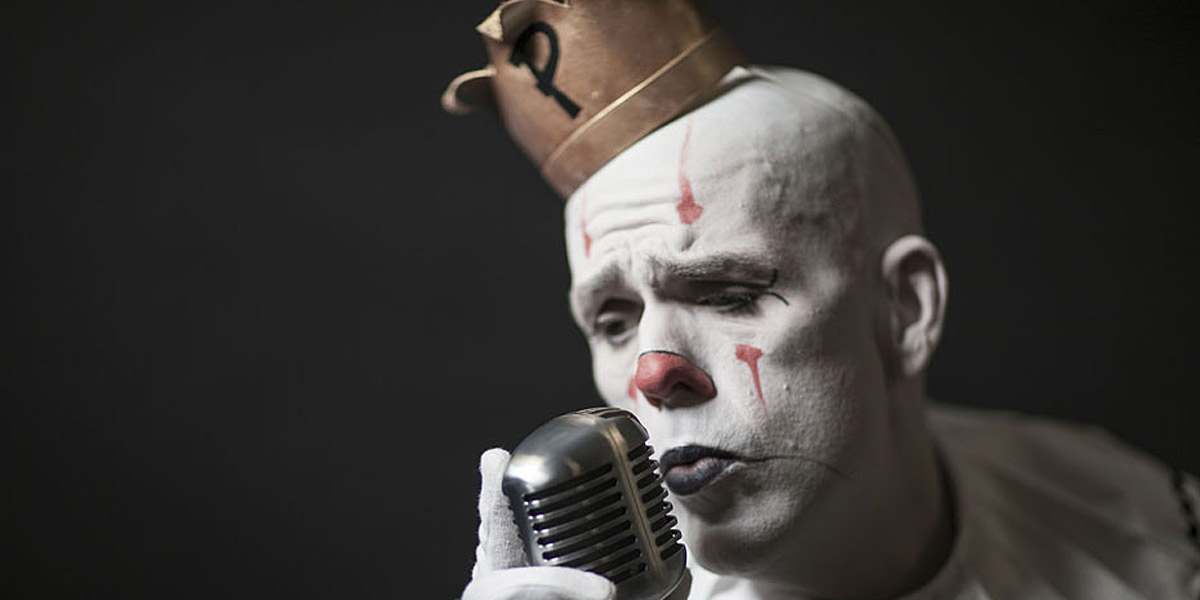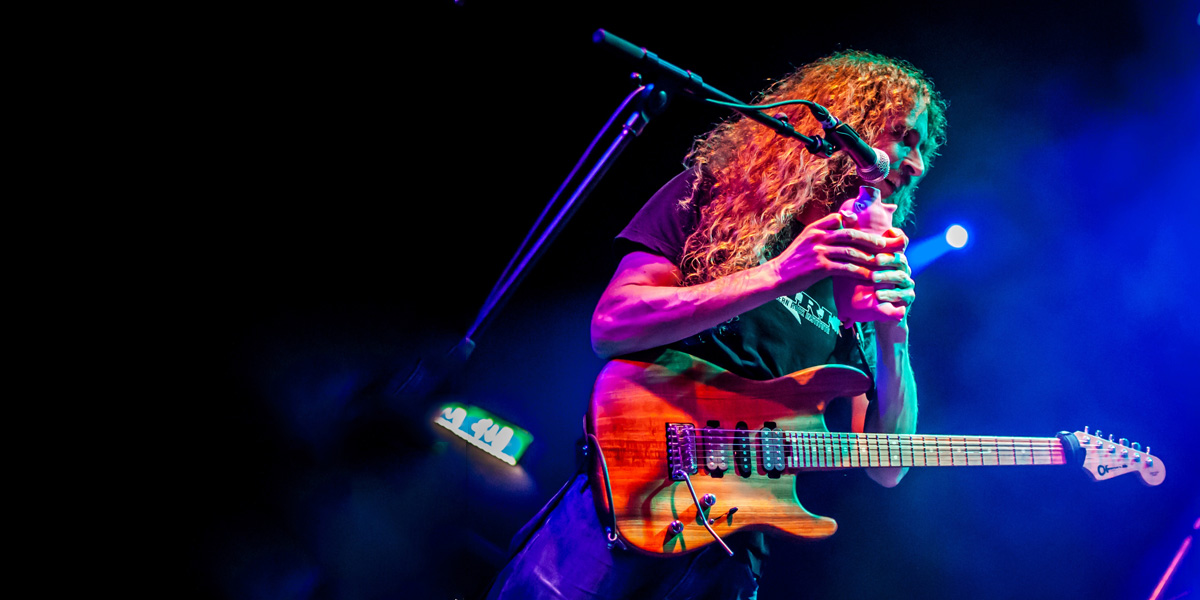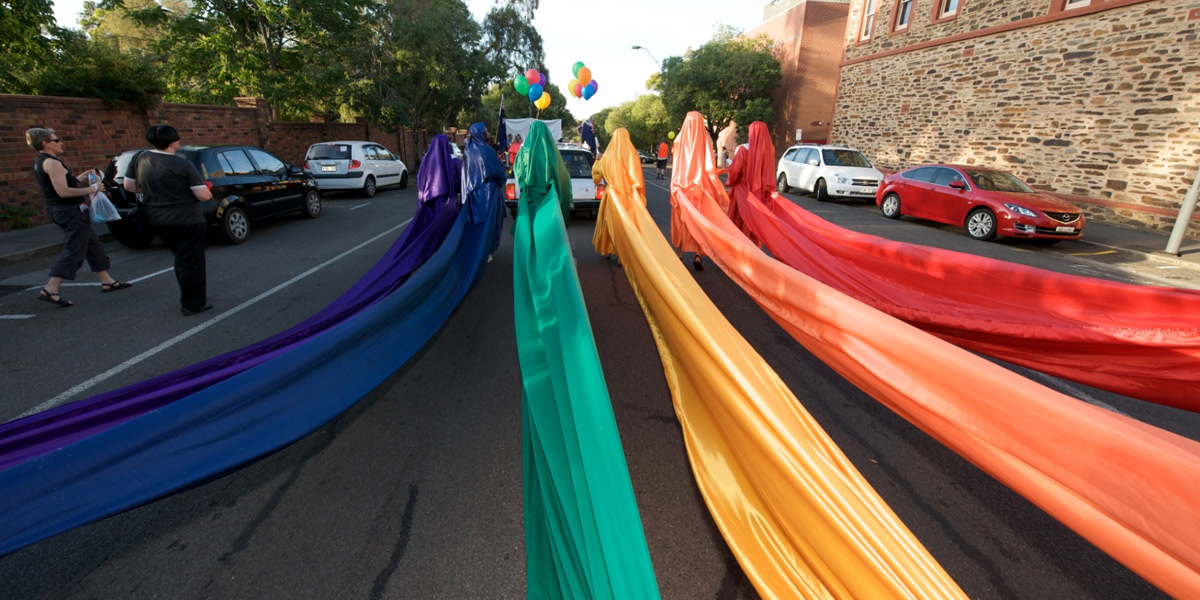The true value of Adelaide’s festivals
Festivals bring much more to Adelaide than fun, visitors and dollars. Farrin Foster undertook a year-long mission explore their real unquantifiable value.

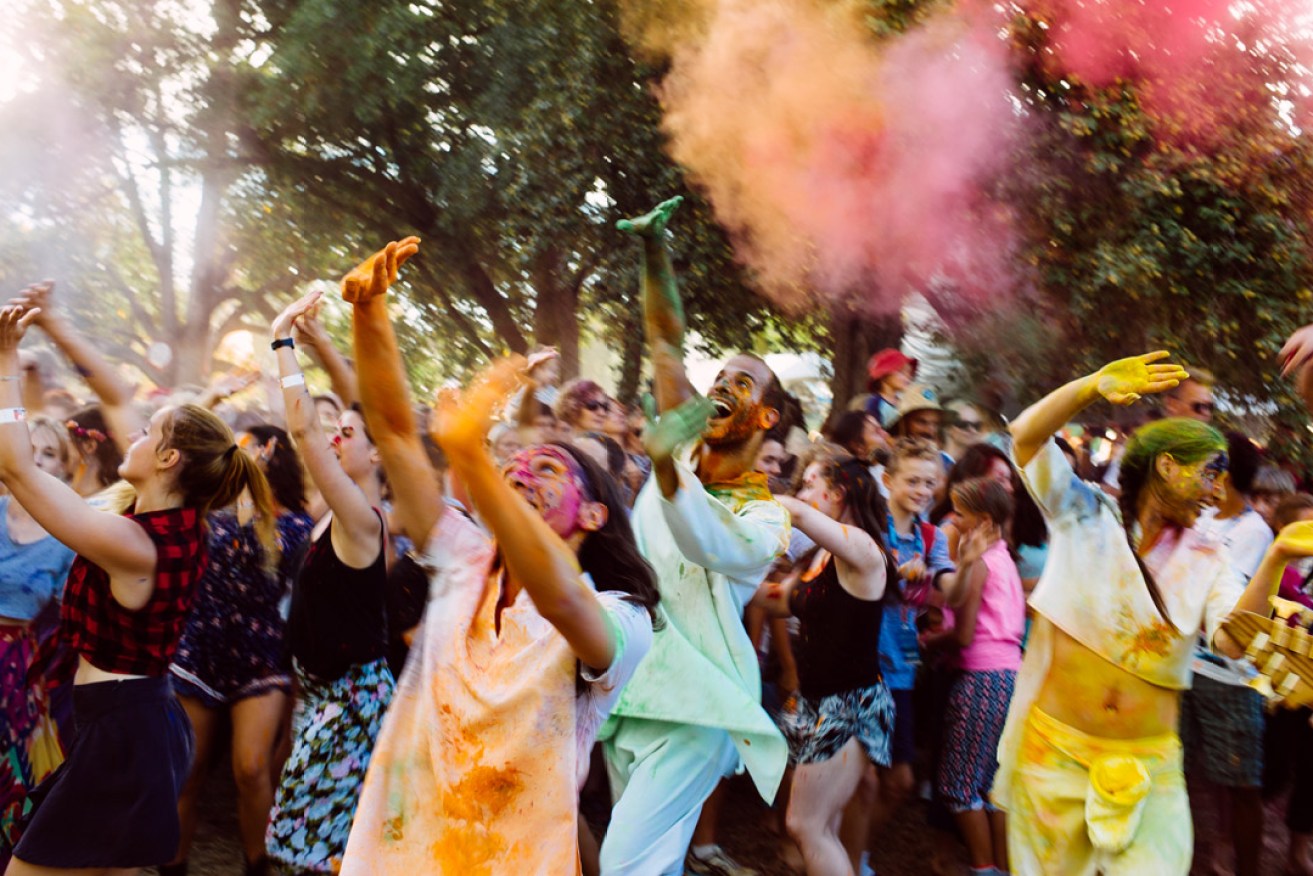
Unified in a feeling of joy at WOMADelaide. Photo: Ben McGee
When I was first asked to attend a year’s worth of festivals in Adelaide and write about the experience, the thing I didn’t grasp was that a year’s worth of festivals is also a year’s worth of life.
I began the assignment as the Cabaret Festival was drawing to a close. Aware that the delivery date wouldn’t allow for another season of feather-boa-draped performers to pass through Adelaide before I sat in on a show, I went along. For company I took with me a flu – the severity of which had me bedridden for almost two weeks prior – and a friend who was unable to talk thanks to recent vocal chord surgery.
The weekend I attended the Adelaide International Guitar Festival was the same one that my grandfather – a kind and intelligent man who had raised me – was admitted to hospital after a stroke. By the time the SALA Festival rolled around, Grandad was dead, and I was in the grips of my first proper spell of grief, with gut-wrenching sobbing sessions that came upon me with barely any warning.
OzAsia coincided with the breaking of my foot. It was only the second bone I have ever snapped, and I found that fracturing a third metatarsal at the age of 27 was quite a lot more challenging than breaking a collarbone when I was 12. The main problem was that walking is a skill I rely upon but which I didn’t possess for this time period.
The Adelaide Film Festival occupies that barren space just before Adelaide hits summer. Nothing particularly life-changing happened in this period, but for reference, when I attended the event previously it coincided with the launch of CityMag – the first publication for which I had performed the role of founding editor.
My stress levels at that time matched my exhilaration, and the Film Festival’s opening night seemed like the perfect place to balance both with a giant quantity of wine. All that remains of the night are flashes of memory, but my memory of the hangover that arrived the following day is surprisingly clear. Of course, if this world-class event was made annual instead of biennial – as it should be – I would be more readily able to tie its meaningful artistic contribution with meaningful, non-alcoholic moments in my life.
After the Film Festival there’s a brief drought, which breaks about the same time the year’s rains dry up. The Feast Festival arrived in early November just as I was finishing up one of the biggest freelance projects I’d ever worked on.
Festival high season blows in with force in mid-February, signalled by the start of Fringe and the opening of its most iconic venue – The Garden of Unearthly Delights. It was at this event that the cracks in my six-year relationship turned into what seemed more like chasms, and by the time Adelaide Festival opened a few weeks later the chasms had become so large that we’d both fallen in and climbed out on separate sides.
WOMADelaide, then, was one of the first events I attended in almost seven years as a single person, and the universal joy that festival inspires served as both a painful contrast and soothing antidote to the second round of grief I suffered that year.
The tearing confusion and high-frequency pain had dulled to an ache before Come Out Children’s Festival launched with a more than usually spectacular event on Adelaide’s still reasonably new Torrens footbridge.
***
It was a dramatic year of life, and one that is very unlikely to have been mirrored exactly in the lives of those thousands of fellow audience members I sat, stood, walked or danced among at each festival.
Despite the differences in our lives and circumstances – which, of course, ran far deeper than current personal events – I’m almost certain our perceptions aligned for a few fleeting moments during even the most average of performances and events.
It is a strange sensation – the awareness that you’re having the same thought or feeling as people around you. Intellectually, it’s something you can’t confirm, but intuition tells you it’s a truth.
What I realised as I lived through a year of festivals and a year of life was that while life can push us further from those around us, festivals tie us together and drag us in the same direction, and it’s as we inch towards communal thought that we experience something rare – unity.
I felt this cohesion all the more keenly in contrast to the emotional ties in my daily life. Being lifted above and out of them and brushing up against something bigger than my own preoccupations was not always welcome, but it was consistently transformative.
My experience showed me that while these moments may be small, their potential is untold. It is perhaps only in these seconds of mutual thought that we have the chance to escape all the ties that bind us to ourselves – for a few moments we think outside the structures of our own mind and understand what it is like to be someone else.
It is also at these moments that we are at our most suggestible – thrown into the air through the medium of common understanding, we are at the mercy of those who know how to direct our landing.
Festivals create a series of these transcendent moments, but never seek to use them for a particular aim. Instead of being manufactured, the moments are organic – their effect is specific to a time, place and space. Most of them might not achieve anything except a warm feeling glowing in the middle of a crowd of strangers, but some of them are much more – they are the start of something. They are the start of connection, and the start of an evolved identity.
At their best moments, Festivals remind us of what we often forget – that we are human, and that our future is communal.
Festivals, connection and society
How festivals help an ancient species understand a modern world
There is no modern condition. The essential parts of us are the same as they ever were. Marginal changes through evolution are yet to rewire the forces that tell us to be the way we are.
Society, however, has undeniably changed.
In western communities, particularly, we are physically isolated from each other. We sleep in separate rooms, gravitate towards private modes of transport, are walled away from colleagues at work by dint of grey cubicles.
Our politics is driven by a public conversation that panders to self-interest as each news item is distilled into a summation of the impact it will have on your household budget.
Social interaction is increasingly anti-social. People converse through the medium of screens, not faces, which is not of itself a sin but can stall development of the ability to read subtle cues. Even when we’re with others we have half a mind on what is happening elsewhere via the thing that buzzes in our pocket – or worse, on the table.
There are few places in Australian life where true moments of community still exist. Local sport clubs are one outpost that carry the tradition; festivals are another.
Both bring together people not through ideology, but through an interest that is uncoloured by schools of thought. By their participation, a hugely varied group of people becomes part of a collective experience.
And while the arts industry may be dominated by the left, arts audiences are diverse – making the communality of festivals all the more valuable.
Adelaide Festival Centre director Douglas Gautier told CityMag that 60 per cent of people attending shows at the centre also attend sports events at Adelaide Oval. What figures like this reveal is that far from being the exclusive realm of well-heeled Dunstan-era progressives, the arts in Adelaide belongs to everyone from AFL tragics to Liberal Party stalwarts to Green Left Weekly-toting teens.
Sam Wright – an emerging festival programmer responsible for events such as Bus to Big Trees – says he invests his energy in creating festivals because they give rise to moments where “the potential of how good we could be is fulfilled”.
There is a profound effect when two people who might otherwise have little in common together experience a moment like those Wright describes.
For example, when the entire audience in the Dunstan Playhouse leant forward, enthralled in the house-of-cards structure built by calligrapher Hiroko Watanabe as she performed alongside band Above the Clouds during OzAsia, it was revealed that all of us in the audience felt the hold of beauty in the same way.
The universal deflation of theatre-goers when the tiny robot protagonist of Adelaide Festival’s Nufonia Must Fall ruined his chances for love exposed our common approach to sympathy.
As the crowd roared a cheer of approval, waited for the beat to re-emerge from amid twanging guitars and – as one – fell into an energetic dance encore during Fanfare Ciocarlia’s set at WOMADelaide, we felt the happiness of the stranger dancing alongside us and it added to our own.
In each of these moments, hundreds of people were unified in feeling. They connected to one another and, unconsciously, were reminded that even though we may disagree on politics, finance and hairstyles, there are some core parts of us that are the same.
Such a reminder is the antidote to society’s physical and ideological fragmentation, and is essential for us to continue to function in co-operation with one another despite our differences.
These reminders are all the more important for a city like Adelaide, which struggles to create enough connection to keep people here.
Adelaide Film Festival director Amanda Duthie visits festivals around the world as she looks for work with which to fill her program. Yet, her experience of Adelaide at festival time is unique.
“In other cities, there is so much white noise, but Adelaide is different,” she says.
“Even if you don’t go to a festival event or venue, the feeling of being part of something is there – it permeates everything and creates a more wide-reaching collective experience.”
As well as connecting us to each other, festivals connect us to a place. Our surroundings are as much a part of the transcendent moments we experience as our fellow audience members.
When people emerged from Puddles Pity Party at The Garden of Unearthly Delights, they stepped foot into Adelaide’s Parklands.
Embracing Puddles after his show as the sun set over this urban stretch of green, they created an image in their minds of a singular, deep experience which is tangled up with the place in which it happened. If they had left the venue and entered an impersonal theatre foyer instead of the fairy-light-strewn park, perhaps their encounter would have felt different – more awkward, less genuinely heartfelt. As it was, the Adelaide geography that gave rise to something special will remain in their consciousness as a place to return to again and again.
As these people move out onto the streets, they carry a feeling of goodwill with them and it creates an atmosphere of conviviality. From Rundle Street to Hindley Street, people step lighter and stay out longer when festivals are on. They are buoyed by a sense of being part of something that infects those around them.
The truth of the moments people experience in this environment are a strong connector to Adelaide as a city – it is moments where we bond, understand and believe we belong that make us feel at home.
With their ability to connect us, festivals create goodwill for one another and for a place. In doing so, they make us better members of society and more ardent advocates of Adelaide – two things that can never be measured, but have an enormous value nonetheless.
Festivals, identity and the future
How festivals help us make tomorrow better than yesterday
As well as telling us what we are – humans living in a community of other humans – festivals have the power to tell us what we are going to be.
Australia suffers from a notorious identity crisis. It’s a country with a contemporary history of being a follower, first of Mother Britain and then beguiled by the power of the US, and much of the national mythology we use to define ourselves is confusing and outdated.
A population without an identity struggles to rally behind leaders as they make difficult decisions. Australia’s vacillating and often backward policy positions speak of a Government stuck between outdated, irrelevant cultural touchstones and a future where what we want to be is so vague as to not even have a form.
Forging a stronger identity is important, yet identity remains, unfortunately, intangible – it cannot be imposed or constructed because to work it must be recognised and embraced by a huge diversity of people.
The mainstream media has long been key in shaping how we perceive ourselves, but its business model – reliant on appealing to a broad readership – keeps the conversation static. The result is that it affirms what we already know and rejects change as scary and unnecessary.
Given that, if Australia wants to rebuild itself and create a new understanding of who we are and what we mean to the world, we need to look elsewhere for a depiction of what we could be.
Festivals are the flipside of the media. They have the same capacity to enter and influence our psyche, but none of the pressure to perpetuate existing beliefs. It is in a festival environment that we can examine new versions of what it means to be Australian.
Gabriella Smart, artistic director of contemporary classical music collective of Soundstream, says this is the reason she engages in the arts.
“I’m thinking of a composer from the Netherlands who said to me: ‘You need the avant-garde, because that’s where the boundaries are stretched’,” she says.
Of course, this is true of almost all art forms. The importance of festivals, though, is their ability to be inclusive and draw people who might usually engage with art only briefly or occasionally into a context where deep thinking becomes not only possible but also likely.
With their all-encompassing atmospheric reach, our city’s festivals capture a wide audience and give them permission to try something new.
The Adelaide Festival’s experiments in creating art clubs – first Barrio and then Lola’s Pergola – were excellent examples of this in action. Both of these venues attracted long lines through on-point marketing campaigns and the promise of indulgence in food and wine, and then engaged punters in immersive art experiences that had powerful effect.
In their own way, both Barrio and Lola’s discussed issues as diverse as sexuality, racism and animal rights – successfully sparking conversations that challenged what these things mean to Australians by using humour, fun and participation.
By entirely different means but with just as much effectiveness, shows such as Guthrie Govan’s Adelaide International Guitar Festival performance tell us something about what we could begin to admire in our idols. Govan is an unlikely hero – with his long hair and shy manner – but his technical prowess and thoughtful inter-song banter inspired intense love in his audience. Many people found themselves spellbound by someone they would have ignored or even joked about had they passed him on the street.
These experiences, with their direct relevance to shaping identity, are only the start of how festivals can help us redefine ourselves. In every festival, there are far less obvious or instructive moments that can still resonate deeply enough to help us see ourselves differently.
Not too many years ago, Adelaide Fringe’s Fake It ‘Til You Make It was a standout hit. It took mental illness as its subject matter, but there were no powerful messages bundled up neatly and handed out by those on stage. Instead, a well-told story with highly relatable characters offered an emotional catharsis strong enough to shift views. As people cried and then laughed and then cried again, they weren’t thinking intellectually about depression, but they were feeling the weight of consequence that results from our inability to openly discuss feelings in this country.
Encounters like this cut so deep emotionally that they can have the same effect as knowing someone who is experiencing trauma in real life – they allow us briefly to see a different world and understand a different way of thinking, and it’s in understanding that we can see how we might need to change. If this happens enough times to enough people, our collective thinking evolves.
And sometimes, the mere existence of a festival or show within a festival is enough to start the process of changing thinking.
Festivals such as Feast, The Spirit Festival and OzAsia aren’t important necessarily for what they can teach the majority about the minority (though they do that, too), but for their ability to empower the marginal.
Isolation and feeling outcast are defining factors of Australian life for almost everyone who isn’t white, middle class and male. Reflecting and normalising the diversity of our national make-up is essential for creating confidence in varied groups so their voices can become part of our public conversation.
Feast’s Picnic in the Park and opening-night Pride March are rare moments where LGBTIQ love is celebrated publicly and en masse in Adelaide. The effect these events have, especially on younger people, who bubble over with joy as they feel – sometimes for the first time – like it’s okay to be themselves in front of others cannot be underestimated.
Festivals seed ideas – the realisation that we can have confidence in ourselves, an empathy for something we didn’t understand before or a new way of approaching an issue – that could evolve into a new way of being Australian.
There are few other forums that do this so effectively, without bias and while drawing in people from across a range of cultures and sub-cultures.
Festivals are a unique opportunity to discuss, at an elementary and emotional level, who we are and how we could transform to more properly meet the challenges of our time and the future, and because of that they are invaluable.
In the end
How festivals help us be human
Festivals are almost unique in their ability to redress two problems in our cultural life.
Through their ability to connect us in rare moments of community and communality, they remind us that we are part of something bigger than ourselves and reinforce our responsibility and respect for each other.
And by providing a forum for new ideas, diverse voices and different thinking, festivals give us the opportunity to evolve our identity – something that is sorely needed if Australia is going to find more effective solutions to the global problems we face.
Festivals make us laugh, they make us cry, they make us dance, they help us fall in and out of love, they create lifelong friendships and momentary thought bubbles. In doing all that, they tell us who we are and who we could be, and bring much more to our city than just visitors and dollars.
Festivals reflect us and shape us, and there are few other forces in our society that are at once so powerful and so accessible.
Farrin Foster is editor of CityMag. Research and reporting for this article was conducted with the support of Festivals Adelaide, where a longer, unedited version will be published.
